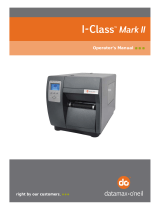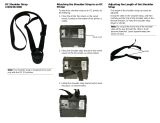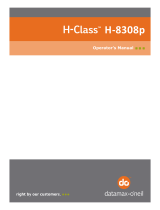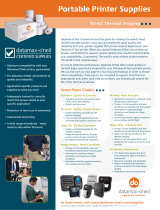
11
Warranty Information
Warranty Service Procedures
Datamax-O’Neil warrants to Purchaser that under normal use and service, the Scanner purchased
hereunder shall be free from defects in material and workmanship for a period of one year (365 days)
from the date of shipment by Datamax-O’Neil. Expendable and/or consumable items or parts such as
lamps and fuses, are not covered under this warranty. This warranty does not cover equipment or parts
that have been misused, altered, neglected, handled carelessly, or used for purposes other than those for
which they were manufactured. This warranty also does not cover loss, damages resulting from accident,
or damages resulting from unauthorized service.
If a defect should occur during the warranty period, the defective unit shall be returned, freight and
insurance prepaid, in the original shipping container to:
Datamax-O’Neil
4501 Parkway Commerce Boulevard
Orlando, Florida USA 32808
A Return Material Authorization (RMA) number must be issued before the product can be returned. To
open an RMA, please call the Datamax-O’Neil Technical Support Department at (407) 523-5540. Include
your RMA number on the outside of the box and on the shipping document. Include a contact name,
action desired, a detailed description of the problem(s), and media examples when possible with the
defective unit. Datamax-O’Neil shall not be responsible for any loss or damages incurred in shipping.
Any warranty work to be performed by Datamax-O’Neil shall be subject to Datamax-O’Neil’s
confirmation that such product meets Datamax-O’Neil warranty. In the event of a defect covered by its
warranty, Datamax-O’Neil will return the repaired or replaced product to the Purchaser at Datamax-
O’Neil’s cost.
With respect to a defect in hardware covered by the warranty, the warranty shall continue in effect until
the end of the original warranty period, or for ninety (90) days after the repair or replacement, whichever
is later.
General Warranty Provisions
Datamax-O’Neil makes no warranty as to the design, capability, capacity or suitability of any of its
hardware, supplies, or software.
Software is licensed on an “as is” basis without warranty. Except and to the extent expressly provided in
this warranty and in lieu of all other warranties, there are no warranties, expressed or implied, including,
but not limited to, any warranties of merchantability or fitness for a particular purpose.
Purchaser shall be solely responsible for the selection, use, efficiency and suitability of Datamax-O’Neil’s
products.
Limitation of Liability
In no event shall Datamax-O’Neil be liable to the purchaser for any indirect, special or consequential
damages or lost profits arising out of or relating to Datamax-O’Neil’s products, or the performance or a
breach thereof, even if Datamax-O’Neil has been advised of the possibility thereof. Datamax-O’Neil’s
liability, if any, to the purchaser or to the customer of the purchaser hereunder shall in no event exceed
the total amounts paid to Datamax-O’Neil hereunder by the purchaser for a defective product.
In no event shall Datamax-O’Neil be liable to the purchaser for any damages resulting from or related to
any failure or delay of Datamax-O’Neil in the delivery or installation of the computer hardware, supplies
or software or in the performance of any services.
Some states do not permit the exclusion of incidental or consequential damages, and in those states the
foregoing limitations may not apply. The warranties here give you specific legal rights, and you may have
other legal rights which vary from state to state.
COPYRIGHT © 2010, DATAMAX-O’NEIL




















